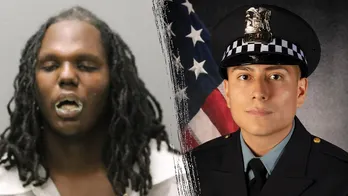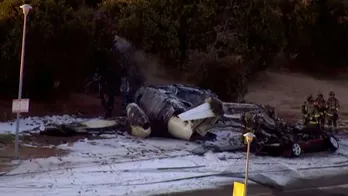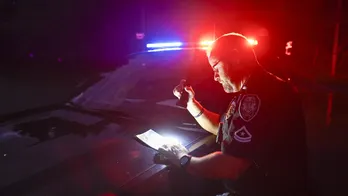Dog alerts family, saves Texas teenager from life-threatening stroke: 'Keeping guard'
A teenage boy in Spring, Texas, may owe his life to the family dog, who saved him from a potentially deadly stroke.
Gabriel Silva, 17, was a healthy soccer player with no signs or symptoms of any medical problems when he experienced a dissection of the artery — when the inside wall of an artery gets torn — on Aug 26.
Early that morning, the family’s border collie, Axel, woke up Silva’s mother and stepfather, Amanda and Daines Tanner, by jumping on their bed at around 5 a.m.
TIAS AND MINI-STROKE RISKS: CARDIOLOGIST SHARES WARNING SIGNS AND PREVENTION TIPS
"He was pretty agitated and excited," Amanda Tanner told Fox News Digital during a phone interview.
"He had both paws on my chest, kind of like he was making sure I was awake and to alert me to whatever was happening downstairs."
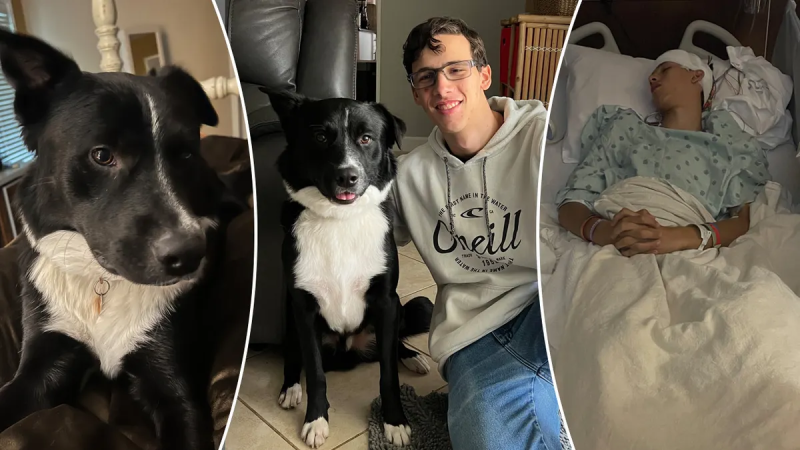
Gabriel Silva, 17, may owe his life to the family dog, Axel, who saved him from a potentially deadly stroke. (Amanda Tanner)
When her husband took the dog downstairs, assuming he had to go outside, Axel led him toward their 17-year-old's bedroom instead.
That’s where he found their son, who was trying to communicate that something was wrong. Yet his speech was slurred, his vision was impaired, and he couldn’t walk or feel his right side — telltale signs of a stroke.
"When my husband tried to get Gabriel to grip his hand, he couldn’t do it," she said.
HIGH BLOOD PRESSURE A CONCERN WORLDWIDE, LEADING TO DEATH, STROKE, HEART ATTACK: HOW TO STOP A 'SILENT KILLER'
The only symptom of a stroke that the teen didn't have was facial drooping — "but that could have been because it was still early in the stroke and it hadn't progressed to that level yet," Tanner said.
Silva’s parents brought him to the closest emergency room, where doctors immediately began treating him with blood thinners. Following that came a battery of tests and scans.
Silva was then transferred to Memorial Hermann-Texas Medical Center, where an angiogram revealed that the teen had experienced a dissection of the artery.
"That normally happens through trauma, like a car accident, but in Gabriel’s case it was spontaneous," Tanner told Fox News Digital.
"There was no explanation. It just happened."
"There was no clot, no cholesterol issue. They did a thorough battery of tests to find the root cause, and there was no explanation. It just happened."
Following the diagnosis, Silva’s artery had to be given a chance to reconnect. The blood thinners helped to reduce the potential of further damage, Tanner said — "but the damage that was done is done."
The stroke had mainly affected the communication center in Silva’s brain, which impacted speech. He also was unable to walk at first, due to losing control of his right side.
Once the doctors determined that Silva wasn’t at risk of a continued or recurring stroke, the teen began therapy sessions to try and regain as much functionality as quickly as possible.
"I would cry when the nurses would come in and ask him to say his name, and he couldn’t do it."
"He had to relearn the alphabet," Tanner said. "I would cry when the nurses would come in and ask him to say his name, and he couldn’t do it."
The road to recovery
Today, Silva is showing significant improvement. He was able to walk again within a week of the stroke, and he was just released from physical therapy on Thursday.
The teen is also in occupational therapy and speech therapy. The speech has been a bigger challenge, but he is making progress, Tanner said.
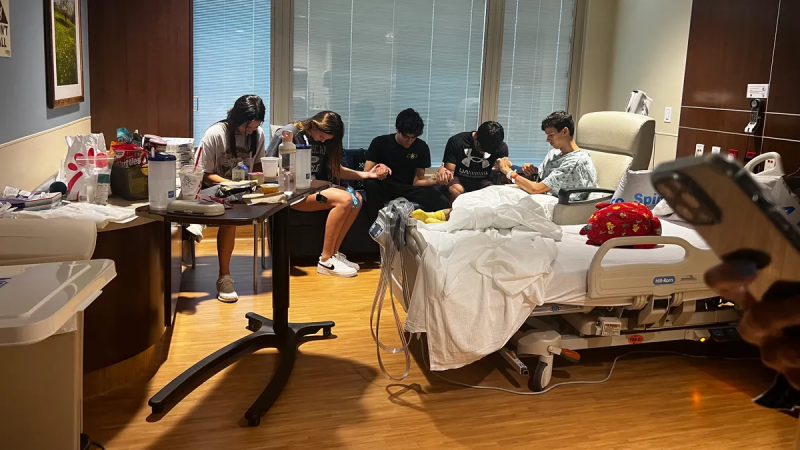
Silva's church group visited him in the hospital, where they prayed together for his full recovery. (Amanda Tanner)
Throughout the entire process, Silva has been determined to return to his regular activities and have a normal senior year.
"He's ready to go back to school," Tanner said. "He wants to play soccer again."
The teen is currently raising money to go on a mission trip to the U.K. with his church next summer.
The stroke has "amplified the way that he thinks about life," she said. "He looks at everything differently. He sees no reason to dwell on things."
HELP DESPERATELY NEEDED: AMERICAN HEART ASSOCIATION LAUNCHES 'NATION OF LIFESAVERS' PROGRAM
Silva’s goal has long been to attend Texas A&M University and become a civil engineer.
"At first it was hard, because he felt like after everything he planned for, his life was over — but I told him it's just going to look different," Tanner said.
The family has received an outpouring of support from their church group, school and community, with different groups of people visiting the hospital each day.
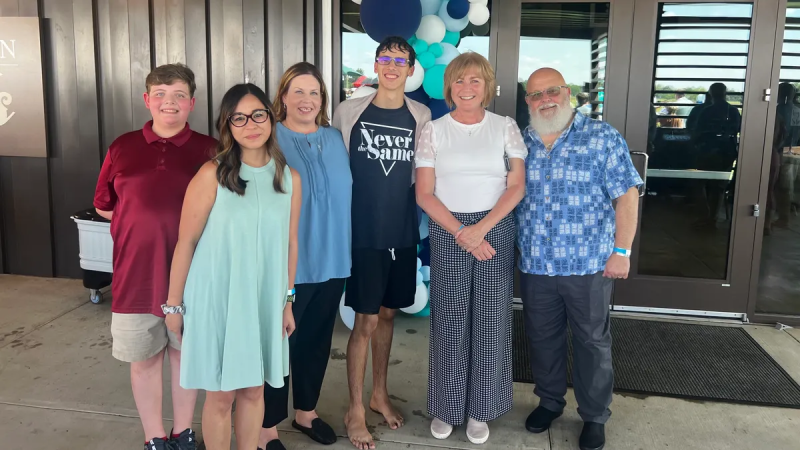
The nursing staff on the intensive neurology floor of Memorial Herman Hospital attended Silva's baptism on Sept 17. (Amanda Tanner)
That included the high-school soccer coach, who brought a ball signed by the entire team — a moment that brought Silva to tears.
"God and our church friends have been our whole support system," Tanner said. "Without them, I don’t know what we would have done."
Rescued by a rescue
Tanner said she wishes she could thank Axel, their border collie, for saving her son’s life.
Given that it was a Saturday morning, had the dog not alerted them, she said she likely wouldn’t have even thought to enter her son’s bedroom until noon.

Silva is pictured with Axel, the life-saving dog, after he returned home from the hospital. (Amanda Tanner)
"It could have been a good five or six hours before we would have been alerted to him being passed out at that point," she said. "The doctors explained how much of a difference it made with being able to get Gabriel to the hospital that much sooner."
Since Silva’s stroke, Tanner said Axel has been actively trying to comfort each member of the family.
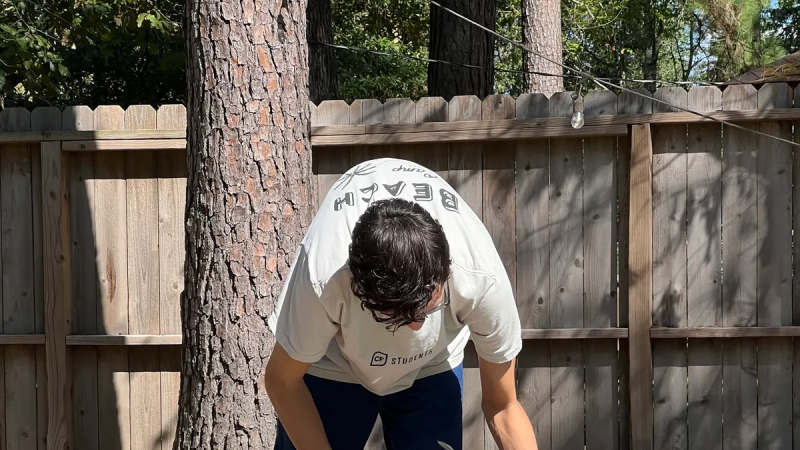
These days, Axel is always with Silva and sleeps in his room at night, Tanner said — "it’s like he’s keeping guard." (Amanda Tanner)
The family rescued the dog when he was just 2 weeks old — he was one of nine puppies whose mother had died.
"He only knows human touch, so he communicates in human ways," Tanner said. "He puts his head on our shoulders and gives us hugs, like he’s trying to help all of us."
CLICK HERE TO SIGN UP FOR OUR HEALTH NEWSLETTER
These days, Axel is always with Silva and sleeps in his room at night — "like he’s keeping guard."
After this experience, Tanner has the following advice for others to prevent a deadly stroke: "Get a rescue dog and learn the acronyms of a stroke, because it makes all the difference."
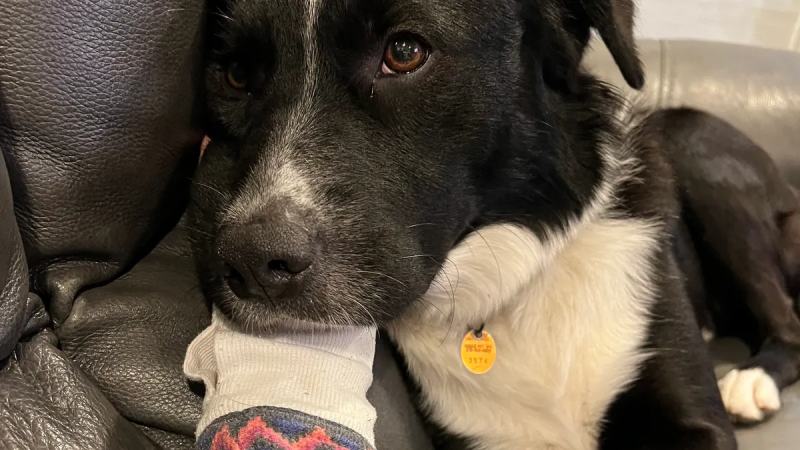
The family rescued the dog when he was just 2 weeks old. He was one of nine puppies whose mother had died. (Amanda Tanner)
The American Stroke Association outlines the F.A.S.T. warning signs of a stroke on its website:
- F = Face Drooping – Does one side of the face droop or is it numb? Ask the person to smile. Is the person's smile uneven?
- A = Arm Weakness – Is one arm weak or numb? Ask the person to raise both arms. Does one arm drift downward?
- S = Speech Difficulty – Is speech slurred?
- T = Time to call 911 – Stroke is an emergency. Every minute counts. Call 911 immediately. Note the time when any symptoms first appear.
Every 40 seconds, someone in the U.S. has a stroke, according to the Centers for Disease Control and Prevention (CDC).
CLICK HERE TO GET THE FOX NEWS APP
Although stroke risk increases later in life, it’s possible to experience one at any age.
Fewer than 40% of those hospitalized due to a stroke are younger than 65, per the CDC.
For more Health articles, visit www.foxnews.com/health.
Disclaimer: The copyright of this article belongs to the original author. Reposting this article is solely for the purpose of information dissemination and does not constitute any investment advice. If there is any infringement, please contact us immediately. We will make corrections or deletions as necessary. Thank you.
